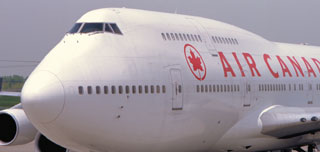
News
Cockpit Crunch?
it appears that Canada’s commercial pilots are about to find themselves in a seller’s market.
October 2, 2007 By Ken Pole
 As aviation distances itself further from the events of September 11, 2001 and the lingering effect that the war on terrorism has had on an industry that was already experiencing a global slowdown, it appears that Canada’s commercial pilots are about to find themselves in a seller’s market.
As aviation distances itself further from the events of September 11, 2001 and the lingering effect that the war on terrorism has had on an industry that was already experiencing a global slowdown, it appears that Canada’s commercial pilots are about to find themselves in a seller’s market.
The world’s airlines expect to increase their pilot complements by approximately 60% over the next three years. Canada has long been a fertile pilot training and polishing ground for other countries’ carriers. Canadian-trained pilots fly virtually everywhere, meaning Canadian airlines must compete globally for homegrown skills. But with the median age of established pilots steadily creeping upward, and Canadian flying schools turning out fewer than 2,200 graduates a year, there are concerns that Canada may face a huge undersupply of pilots.
For example, it is estimated that an average of 450-500 experienced airline pilots will retire in Canada every year between now and 2010. That clearly presents a challenge for the Canadian Forces if it is to keep its pilots from being recruited by carriers. The current point man is LCol Russ Konyk, a former commanding officer of 103 Search and Rescue Squadron, Gander, Newfoundland.
Konyk is overseeing an air force retention initiative, which began with a survey of the Canadian Forces’ pilot population last spring. “The numbers we’re getting are around 400 new hires a year, starting in the latter six to nine months of 2004. This is for retiree replacements as well as growth.”
Konyk expected to complete his review sometime in late December, but is keenly aware that the forecast pool of available talent is shrinking. “We’re going to be competing, in some regards, for our own folks. In that respect, the Chief of Air Staff (LGen Lloyd Campbell) is very keen on making sure that we’re in a position to keep all the air force occupations as a career choice.”